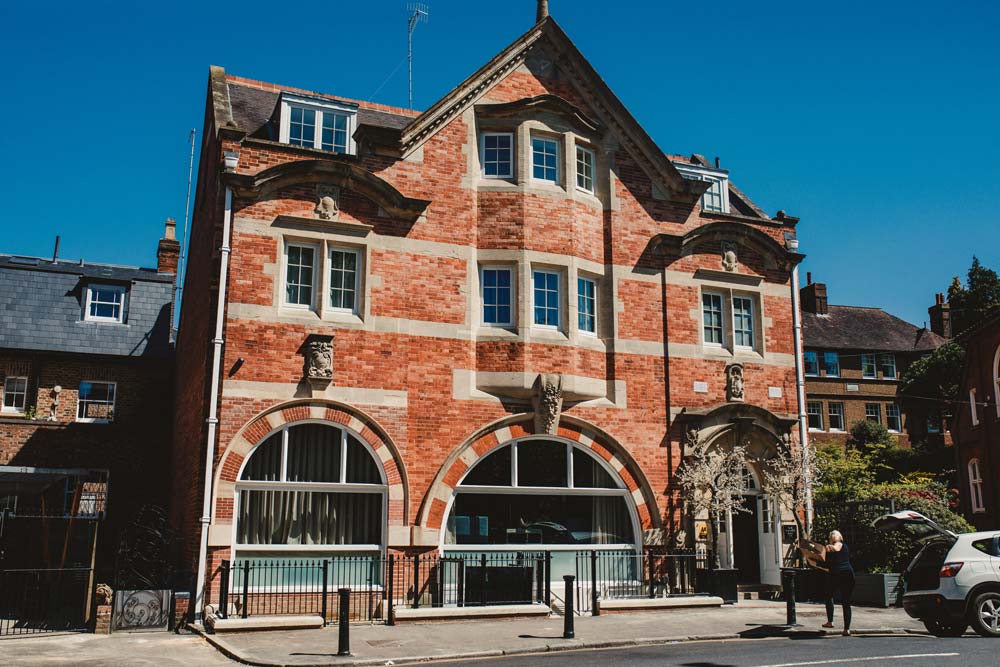
The history of Subbuteo
Jenny Peterson, one of the organisers of the Tunbridge Wells Heritage Open Days, unveils the history and significance for Tunbridge Wells of the world-famous Subbuteo.
The Amelia Scott features an intriguing display. Above the cricket balls (made in Southborough for many years) is propped a cardboard box of Subbuteo, the ‘finger footy’ game with a stuffed bird of prey next to it. These two objects – plus the case full of Subbuteo in the Behind the Scenes section – represent the game’s originator, Peter Adolph, and the impact that his invention had for many years on Tunbridge Wells and its surrounding towns.
Subbuteo continues to be hugely popular all over the world. Clubs, leagues and social media accounts are dedicated to the game. Subbuteo fans have huge affection for Langton Green and Tunbridge Wells as the game’s birthplace; and for many local families, Subbuteo conjures special memories.
Peter Adolph (1916-1994) was an RAF stores manager and former accounts clerk demobbed after the War who returned to live with his mother in Langton Green. Dissatisfied with his job as a civil servant, he decided to focus his entrepreneurial skills on trading birds’ eggs – legal in those days – and on reimagining the tabletop football game that had been popular pre-War. He advertised his new version in the Boys’ Own Paper – and was in fact visiting an egg collector in New York when his mother cabled to ask him to return home and process the resulting flood of orders!


He tried unsuccessfully to register ‘Hobby’ as the name of the new game. Instead he registered ‘Subbuteo’ – the Latin name of the Hobby, which is the small falcon in the Amelia Scott’s display.
Subbuteo proved to be an enormous success. Peter Adolph oversaw operations from his base in Upper Birchetts, Langton Green and expanded the manufacturing and distribution of the sets to sites in Paddock Wood, Chiddingstone Causeway and Wadhurst as well as Tunbridge Wells. From the 1950s to the late 1970s, Subbuteo employed hundreds of people at its sites.
Painting and assembling the players and accessories by hand was fiddly and labour-intensive. These tasks were farmed out to home-based workers in the Tunbridge Wells area, with drivers dropping off bags full of unpainted moulded plastic and collecting the finished products. Most local people either knew someone who did this piecework for Subbuteo, or were involved themselves. It was a particular source of income for home-based women, who would often rope in their families to help too. A common sight in Tunbridge Wells homes was a crowd of tiny figures drying on top of the tv!
In 1969 Peter Adolph sold Subbuteo to the toy manufacturers John Waddington, although the production and management stayed in Tunbridge Wells. Warwick Park became the main manufacturing base – commemorated by the plaque put up by the Council and Royal Tunbridge Wells Civic Society on One Warwick Park hotel.
Waddingtons moved Subbuteo to County Durham in 1982, resulting in the loss of 70 local jobs. Hasbro bought Waddingtons and ceased production of Subbuteo in 2000, although they relaunched the game in 2005 and continue to add to it.


Brace yourselves, Subbuteo fans, because the 2024 FISTF World Cup is coming home to Tunbridge Wells. Read all the info here.














